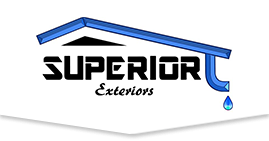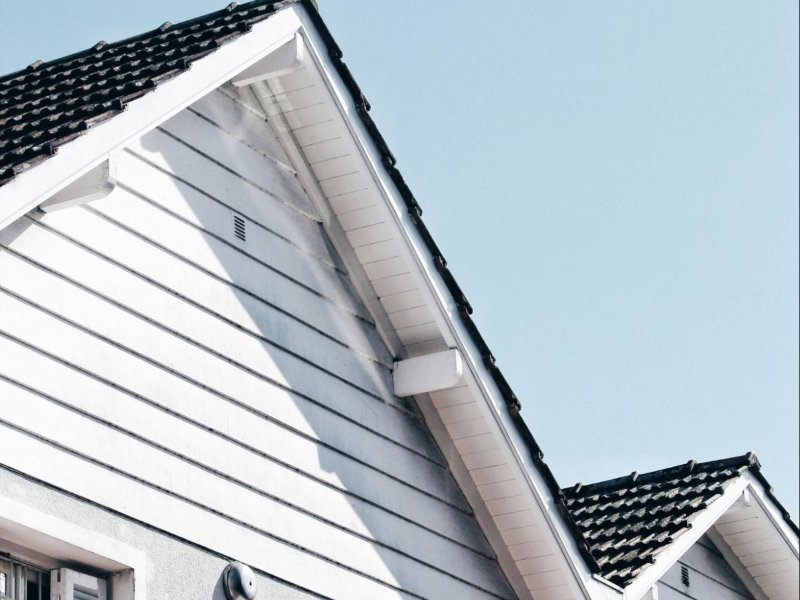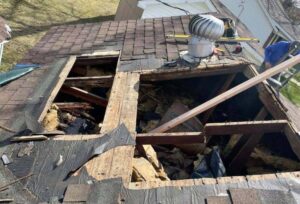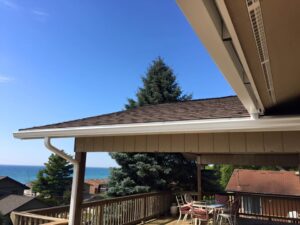Metal roofing has become an increasingly popular choice for homeowners looking for durability, energy efficiency, and aesthetic appeal. With advancements in technology and design, metal roofs now come in a variety of styles and colors, allowing you to find the perfect match for your home. However, choosing the right metal roof can be overwhelming with so many options available. This comprehensive guide will walk you through the different types of metal roofing, factors to consider, and tips for selecting the best one for your home.
Why Choose a Metal Roof?
Before diving into the specifics of choosing a metal roof, let’s take a look at why so many homeowners are making the switch to metal roofing. Architectural Digest has provided us with several benefits of metal roofing:
1. Durability
One of the most significant benefits of metal roofing is its longevity. While traditional asphalt shingles may need replacing every 15-20 years, a metal roof can last 50 years or more with minimal maintenance. Metal is resistant to harsh weather conditions like high winds, heavy rain, and snow. It’s also non-combustible, making it an excellent choice for fire-prone areas.
2. Energy Efficiency
Metal roofs are highly energy efficient due to their reflective properties. They reflect the sun’s heat, reducing cooling costs in the summer. Many metal roofing options also come with advanced coatings that enhance their energy-saving capabilities by improving heat reflection and minimizing heat absorption.
3. Environmental Impact
Metal roofing is an environmentally friendly option because it’s often made from recycled materials, and it’s fully recyclable at the end of its life. In contrast, asphalt shingles contribute significantly to landfill waste when they’re replaced.
4. Aesthetic Versatility
Today’s metal roofs are available in a wide range of styles, colors, and finishes. Whether you prefer the look of traditional shingles, tiles, or standing seam panels, there’s a metal roof that can mimic nearly any roofing material without sacrificing the benefits of metal.
5. Low Maintenance
Metal roofing requires very little maintenance compared to other roofing materials. It resists cracking, shrinking, and erosion, and it’s less susceptible to mold, mildew, and insect infestations.
Types of Metal Roofing
When choosing a metal roof, understanding the various materials and designs is crucial. Each type of metal roofing has unique characteristics that can affect its performance, cost, and appearance. Below are the most common types of metal roofing:
1. Aluminum Roofing
Aluminum is a lightweight and corrosion-resistant option, making it ideal for homes in coastal areas or regions with high humidity. While it may be more expensive than other types of metal roofing, its resistance to rust and long lifespan often justify the investment. Additionally, aluminum is highly reflective, which helps reduce cooling costs in hot climates.
2. Steel Roofing
Steel is one of the most common and affordable metal roofing materials. It comes in several variations, including galvanized, galvalume, and weathering steel.
- Galvanized Steel is coated with a layer of zinc to protect it from corrosion.
- Galvalume Steel is coated with a mixture of aluminum and zinc, offering superior resistance to rust.
- Weathering Steel is designed to rust on the outer surface while maintaining structural integrity underneath, giving it a unique appearance for architectural projects.
Steel roofing is known for its strength and versatility and can be found in a range of finishes and colors to match any home style.
3. Copper Roofing
Copper is one of the oldest metal roofing materials and is renowned for its beauty and durability. Over time, copper develops a natural patina, changing from a bright metallic color to a distinctive greenish hue. Copper roofs can last over 100 years, but they come with a high price tag, making them one of the most expensive roofing materials on the market. However, for those seeking a luxurious and long-lasting option, copper is hard to beat.
4. Zinc Roofing
Zinc is another premium metal roofing material known for its longevity and self-healing properties. When scratched or damaged, zinc develops a protective layer called patina that helps it repair itself over time. Zinc roofing is highly durable and eco-friendly, but it’s also relatively expensive compared to aluminum and steel. Its aesthetic appeal and low maintenance requirements make it a great choice for homeowners willing to invest in a top-tier roofing material.
5. Standing Seam Metal Roof
Standing seam metal roofing is characterized by long, vertical panels that interlock with raised seams. The seams are designed to prevent water from penetrating the roof, making this style particularly effective in areas with heavy rainfall or snow. Standing seam metal roofs offer a sleek, modern appearance and are highly durable. They can be made from a variety of metals, including aluminum, steel, and copper.
6. Metal Shingles
For homeowners who want the look of traditional asphalt shingles or slate tiles but with the benefits of metal, metal shingles are an excellent option. These shingles are designed to mimic the appearance of other roofing materials while providing the durability and energy efficiency of metal. Metal shingles are available in a wide range of styles and colors, making them a versatile choice for various home designs.
Factors to Consider When Choosing a Metal Roof
Selecting the right metal roof for your home involves more than just picking a color or style. Here are some essential factors to consider:
1. Climate
The climate in your area plays a significant role in determining the best type of metal roof for your home. For example, aluminum roofing is ideal for coastal regions due to its resistance to corrosion from saltwater, while steel may be a better option in areas prone to heavy snow or wind.
2. Aesthetic Preferences
Metal roofing comes in a wide range of colors, finishes, and styles. Think about how the roof will complement your home’s exterior design. Do you prefer a sleek, modern look with standing seam panels, or do you want a more traditional appearance with metal shingles?
3. Budget
Metal roofing can vary greatly in price depending on the material you choose. Steel and aluminum are typically more affordable options, while copper and zinc can be significantly more expensive. Consider your budget and weigh it against the long-term benefits of each material, such as durability, energy savings, and maintenance costs.
4. Installation Costs
In addition to the cost of the materials, factor in the cost of installation. Some metal roofing types, like standing seam roofs, require specialized installation techniques that may increase labor costs. Ensure that your roofing contractor has experience with the specific type of metal roof you choose.
5. Maintenance Requirements
While metal roofs are generally low-maintenance, some materials, such as copper and zinc, may require periodic inspections to ensure they’re developing patina evenly or aren’t suffering from localized damage. Understanding the maintenance needs of your chosen material will help you make an informed decision.
Tips for Choosing the Right Metal Roof
- Consult a Professional: Always work with a reputable roofing contractor who has experience with metal roofs. They can help you assess your home’s specific needs and recommend the best material and design.
- Consider Energy Efficiency: Choose a metal roof with reflective coatings if energy efficiency is a priority. This will help reduce your home’s cooling costs, especially in warmer climates.
- Research Warranties: Metal roofing often comes with long warranties, but it’s important to understand what’s covered. Some warranties only cover the material, while others may include installation or color retention.
Conclusion
Choosing the right metal roof for your home involves considering various factors, from climate and budget to aesthetic preferences and maintenance requirements. With a wide range of materials and styles available, there’s a metal roof option for every home. By taking the time to research your options and consult with professionals, you can make an informed decision that will provide your home with a durable, energy-efficient, and beautiful roof for decades to come.







